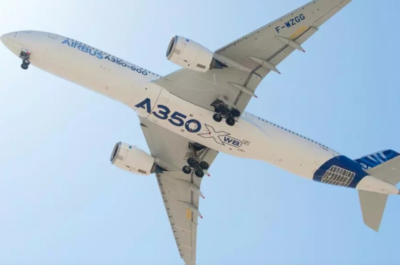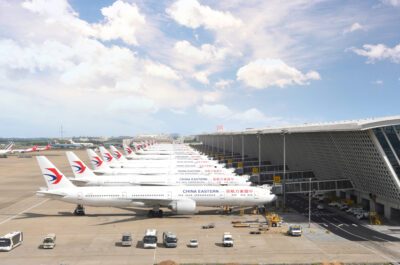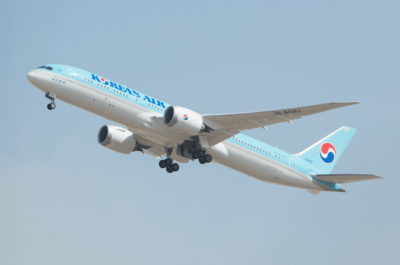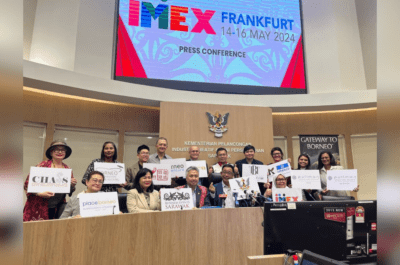The upcoming WTM-ChinaContact conference on bilateral tourism relations with China, China – the future of Travel is gearing up to be the most comprehensive collection…
The upcoming WTM-ChinaContact conference on bilateral tourism relations with China, China – the future of Travel is gearing up to be the most comprehensive collection of knowledge and expertise on China`s tourism sector ever assembled outside China.
A keynote speaker and chairperson of the session on bilateral tourism, Mrs. Shen Hui Rong, has until recently held the position of Marketing & Communications Director General at China National Tourism Administration (CNTA) in Beijing. For over 27 years, Mrs. Shen played key roles in China`s rapidly developing tourism industry. She implemented China`s recovery program post-SARS and has negotiated tourism agreements, known as ADS, with overseas destinations. Her work in this area earned her the nickname Ms. ADS
ChinaContact interviewed Mrs. Shen about China approach to outbound tourism and the role they see it playing in overall economic growth and social benefit to China. The views reflected are personal and do not represent any official body.
In ChinaContact`s question what is China`s outbound travel market potential, Mrs Rong replied As usual when something is big in China, the numbers mentioned are staggering. The World Tourism Organization forecasts that China will become the world`s fourth-largest source of outbound tourists by 2020 with more than 100 million departures each year. Outbound travel from China jumped 50-fold in 20 years. In 1997, when the first batch of ADS destinations were approved including Thailand, Singapore, Malaysia, Philippines and the Hong Kong and Macao Special Administrative Regions, only 5.32 million trips were made. The number became 16.6 million in 2002, 20.22 million in 2003 despite the SARS epidemic, 28.85 million in 2004 and 31 million in 2005. It is expected that 2006 will still see 34 million overseas trips (10% increase). China has already replaced Japan as Asia? number one outbound travel market.
Regarding the type of Chinese visitors that will be coming to Europe in the next few years and how is the market going to be segmented, Mrs Rong said According to the survey released in the Annual Report of China Outbound Tourism Development 2005, white collar and company managerial staff are the main source of outbound travel, making up half of the market. This is especially the case in Beijing and Shanghai. 80% outbound travellers are aged between 18-50 with high education. 45% of outbound travellers are from three-member families while couples or singles comprise 30%.
China`s per capita GDP exceeded US$ 1000 in 2003, which was regarded as a solid economic base for leisure holiday. In 2005 annual disposable income in urban areas averaged RMB 10,493 (approximately US$ 1,311). Total private bank savings exceeded RMB 14 trillion (approximately US$ 1.75 trillion), indicating that leisure time and activities were affordable. Europe is considered to be the popular elite tourist destination while Asia is the mass market for Chinese tourists. The prices of the European tours, affordable by the middle-high segment, sometimes are double or triple the price of Asia tours. The price of 10-days high-quality trip to UK is as high as US$ 2,600 during the Oct 1st National Day Holiday.
The tour package accounts for just 30-50% of their budget, while the rest is spent on shopping, This is quite different to Western tourists who spend more on accommodation and services. In 2002, Chinese travellers were only allowed to exchange an equivalent of US$ 2,000 in foreign currency. Now they can exchange as much as US$ 6,000, said Rong giving a reflection of the affluence of Chinese visitors coming to Europe.
Another big issue that raised by ChinaContact is if the high cost of staying/eating in the UK and Europe will influence the holiday destination choice of Chinese people. Mrs Rong replied that not only the staying/eating in the UK and Europe is high but also the airfare. While this is a factor, at present the visa issue is still the major barrier for Chinese travellers to Europe. Since last July EU nations carried out a stricter visa policy for Chinese tourists and as a result the number of Chinese tourists to Europe has not increased by much.
Will Chinese clients still prefer multi-destination holidays taking in a number of European destinations? Shen Hui Rong said that 14 days trip to Germany, France, Switzerland, Italy and Holland; 12 days trip to Germany, France, Switzerland, Italy, Vatican and Austria; 9 days trip to Switzerland, Finland and Belgium or Switzerland, Germany and Austria are the most popular products while 11 days trip to Spain and Portugal; 9 days trip to Nordic countries are the most aspirational products.
Will tours be city based, or will they try more `outdoors` spots such as the Italian lakes or Germany? Black Forest? Most of them are city based if they travel to long-haul destinations but some Chinese golfers like to go to St. Andrews, which is included in tour packages, explained Rong.
Why are bilateral agreements and cooperation important culturally? Bilateral agreements and cooperation will enhance two-way traffic. The more people travel between two countries, the better understanding each other will attain. This will reduce the differences and cultural gap to further develop friendship between the two peoples.
How do these agreements influence western businesses looking to get a foothold in the market? The growing of two-way traffic will not only provide more opportunities for western businesses to develop but also help them to see the Chinese market in long-term, not short-term perspective and get a foothold by learning and knowing Chinese culture and making Chinese friends.
What are China and its provincial tourism boards doing on the ground to attract western companies to send more tourists to China? China national and provincial tourism boards do their best to attract western companies to send more tourists to China through joint advertising, seminars and media trips to China and Chinese specialists training programs.
Does China have a target number of western visitors by 2020? It is planed by China National Tourism Administration in China? long-term Tourism Development Outline that the total number of arrivals to China will reach 210-300 million by 2020, of which 95-139 million are overnight tourists and 31-45 million are foreign tourists. In 2005 China received 120 million, 10.3% higher than last year, of which 47 million were overnight tourists and 20 million were foreign tourists.
It was targeted that during 2000-2005 the Western market would increase by 6.5% annually, expecting 1.5 million arrivals to China by 2005. But the figures of 2005 released by CNTA were more optimistic, showing that China received 2.56 million, 71% higher than target.
Are the authorities concerned about the influx of western values/culture through increased tourism to China? Western tourists certainly will bring an influx of western values and culture to China I believe it would be good. China can learn something and benefit from other cultures as well as promoting its own culture through tourism, said Mrs. Shen Hui Rong
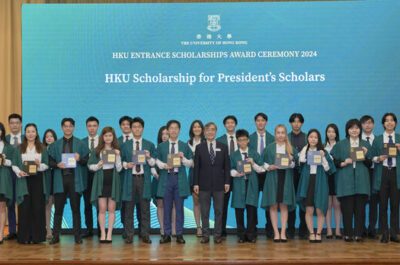



![[PR] PR_Ascott and Vimut Hospital_2024](https://www.traveldailynews.asia/wp-content/uploads/2024/04/PR-PR_Ascott-and-Vimut-Hospital_2024-400x265.jpg)




